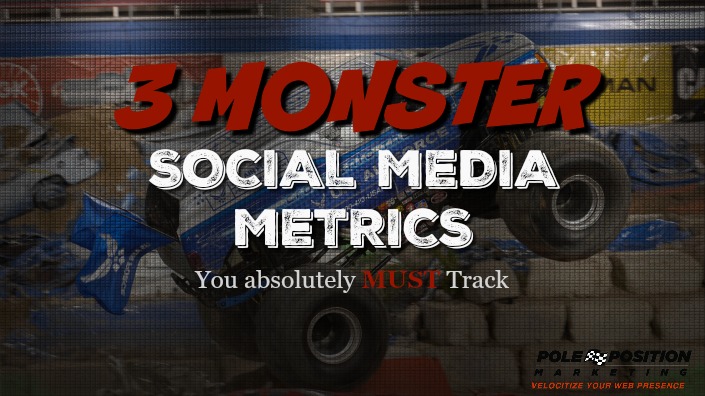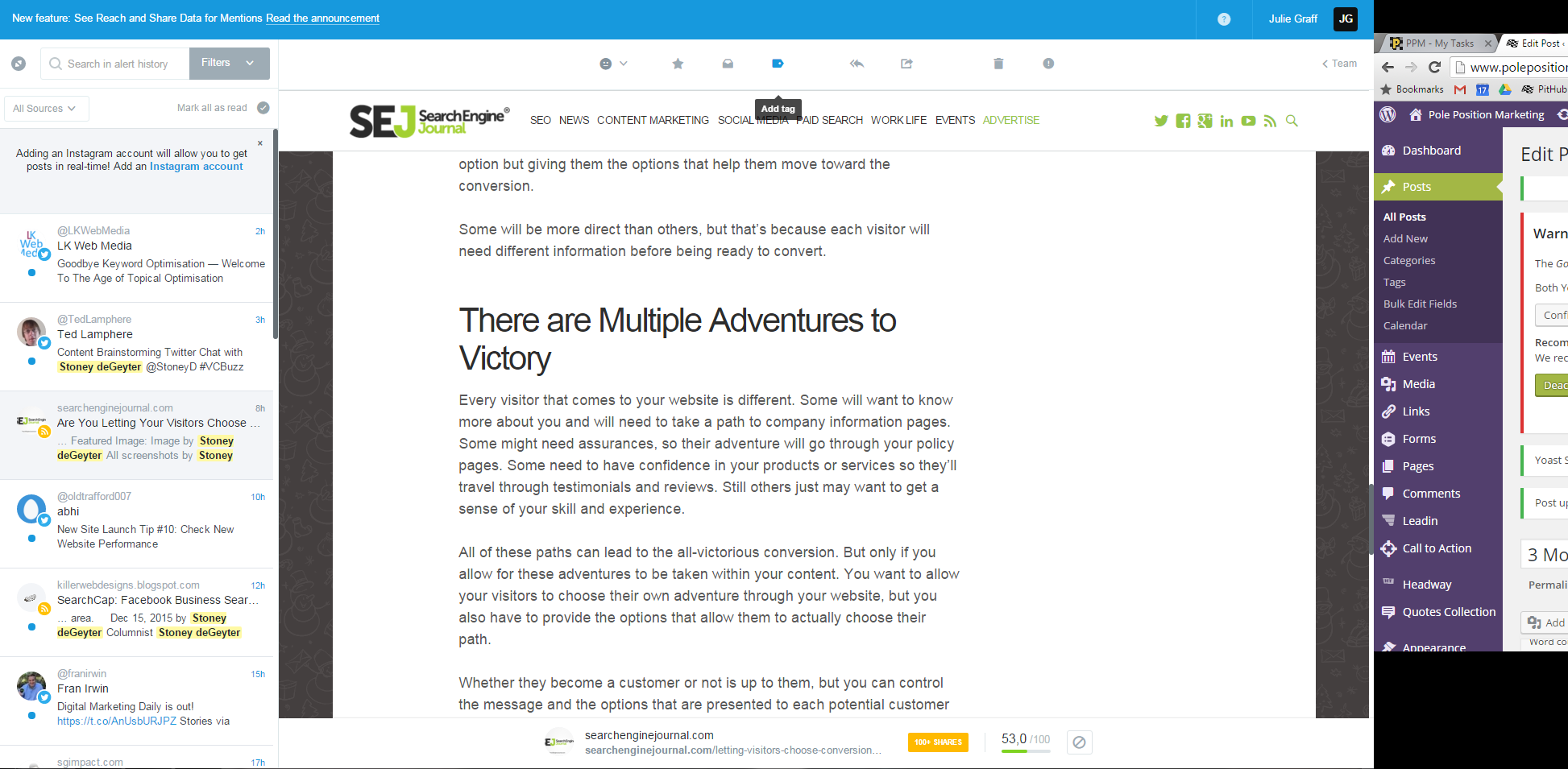
When it comes to social media, there’s no shortage of metrics that you can monitor to determine whether or not your efforts are successful. It’s easy to get buried in the maze of data trying to make heads or tails of it all. Stare at it too long and you’re liable to bang your head against your desk a few times.
Or run for political office.
But in the midst of all that data, there are three metrics that you may not be paying (enough) attention to:
1. Reputation
Social media has always been a great place to connect with your customers and provide customer service. However, it’s becoming increasingly important to monitor social media for positive and negative brand mentions. The last thing you want is your brand being drug through the mud on social media, but you also really want to find positive brand mentions and connect with your brand ambassadors.
Tracking the positive, neutral and negative mentions of your brand can help you gauge the connection consumers have with your brand. Are they ready to throw you to wolves, feel “meh,” or are they singing your praises from the rooftop?
We’ve tested a lot of tools to track brand mentions and their sentiment. Our favorite is Mention. It seems to pick up the most mentions out of the tools we’ve tried and it’s trainable. It learns what you are looking for, so over time the brand mentions it picks get more relevant. A good comparison is how the Pandora music app learns what you like as you click the thumbs up or thumbs down on songs.

2. Follower Engagement
Measuring the engagement rate of your followers gives you an idea of how well you are connecting with your audience. Most followers are passive in that they may read your updates, look at your photos or watch your videos, but that’s about it. Engagement is when they actually respond to you.
As much as you want to grow your followers, engagement tells you whether or not you are truly making a connection with your audience. The higher your engagement, the better job you are doing, and the greater opportunity you have for drawing new and returning customers back into the fold. Also, as more social networks use algorithms to determine what content users see from brands, engagement is a key metric in getting your content in front of more of your followers.
Low engagement rates can be the symptom of many things, but ultimately you’re just not making a strong connection. You’re missing the mark in developing a relationship with your audience that can be instrumental in driving new businesses and brand loyalty. At the end of the day 100 engaged, loyal followers are better than 1,000 unengaged followers.
Rather than focusing on raw numbers of shares, comments, likes, etc., a better engagement metric to focus on is relative engagement. You may have received 100 comments per post on average, while a competitor may only receive an average of 50 comments per post. But what if you have 10,000 followers and the competitor has 2,500? Relative to the number of followers, your competitor’s posts are actually performing better than yours.
We’re big fans of TrueSocialMetrics.com which will automatically track and calculate your relative engagement metrics and allow you to compare to those of your competitors.
3. The Mystery Metric
When it comes to your third monster metric, we have to pull out our old favorite phrase: “It depends.” There are so many variables when it comes to online marketing and individual businesses, that every situation is unique. [inlinetweet prefix=”” tweeter=”” suffix=””]Your most important monster metric is going to depend on your metrics and goals.[/inlinetweet]
If you’re running a large promotion on social media with the goal of increasing email subscribers, should you be worried about how many followers you have? No. For that time period, the metric that matters most is the conversion rate of users seeing your promotions and signing up for your email list.
If you’re a local public health organization, your main goal may be getting health information out in front of as many people in your community as possible. So for you, the most important metrics might be reach, impressions or click-throughs to your website for more information.
Every business is different, and the most important metric is the metric that measures your most important goal.
What about all the other metrics?
You may not need to put aside the social media metrics you’re currently looking at, but you absolutely need to make room for the three mentioned above. While most other social media metrics can provide useful information, not all of it is actionable. [inlinetweet prefix=”” tweeter=”” suffix=””]Focus on a few monster metrics, and don’t get side-tracked by how many likes or followers you have.[/inlinetweet] If you’re accomplishing your goals and engaging with the customer, likes and follows will be a natural bi-product.
